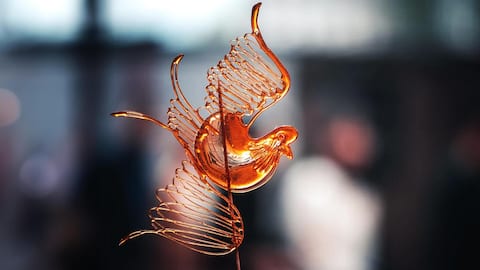Exploring the sweet art of sugar painting
What's the story
Sugar painting, a traditional Chinese craft, combines culinary art with intricate design, creating edible masterpieces that are as delightful to look at as they are to taste. This ancient art form, known in Mandarin as "Tang Hua," has enchanted people for centuries. As street vendors craft these sugar artworks with skilled hands, onlookers are treated to a visually engaging performance steeped in cultural heritage.
Ming dynasty
Historical significance and origin
Sugar painting, originating in the Ming dynasty, evolved from a luxury to a popular folk art as sugar became more accessible. Gradually, artists mastered the creation of increasingly complex shapes, enriching the tradition with greater depth and intricacy. Widely seen during festivals, this art form transcends mere food creation, embodying a storytelling medium where each shape represents various symbols and stories from Chinese folklore.
Process
Materials and tools used
Sugar painting involves melting granulated sugar until it turns golden and syrupy. The hot, liquid sugar is poured onto an oiled surface to prevent sticking. Artists then use a wooden spatula or thin metal tool to skillfully shape the molten sugar into various forms. This process requires precise temperature control and swift, artistic manipulation to create intricate shapes that represent cultural symbols and stories.
Lollipop
Techniques and skills
Sugar painting demands quick, precise work before the molten sugar solidifies within minutes. Artists use a freehand technique to shape the sugar into intricate forms like dragons and zodiac signs. Mastery of Chinese symbolism and skilled hand control are essential for accurate depictions. A small stick is embedded into the semi-hardened sugar, allowing the finished creation to be held and admired like a lollipop.
Animal paintings
Symbolism and tradition
In sugar paintings the dragon signifies power, while the phoenix represents renewal. Selecting figures is similar to bestowing blessings or charms. During occasions like Chinese New Year, zodiac animal paintings are favored for their auspicious connotations of fortune and health. Today, traditional Chinese sugar painting enjoys protection as an intangible cultural heritage in China, embodying the wisdom and creative essence of its people.
